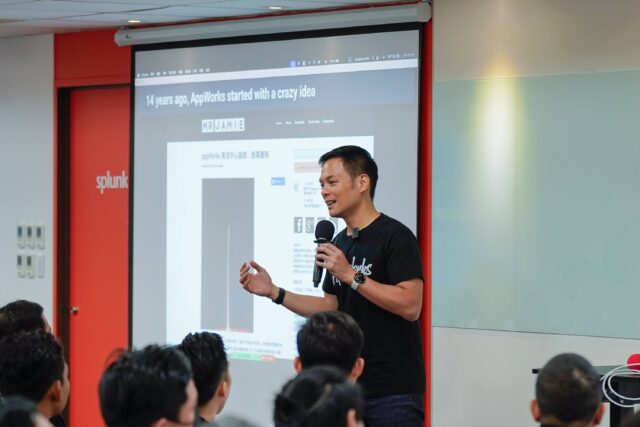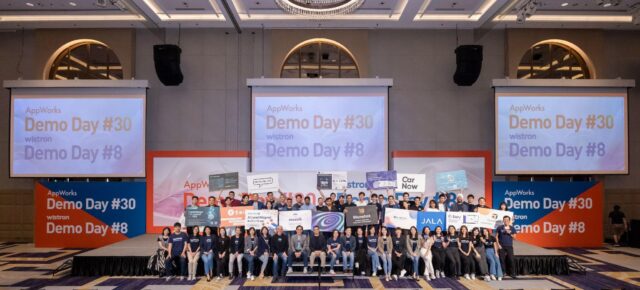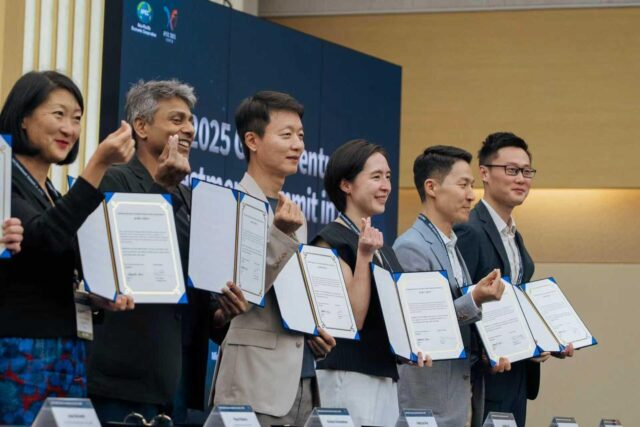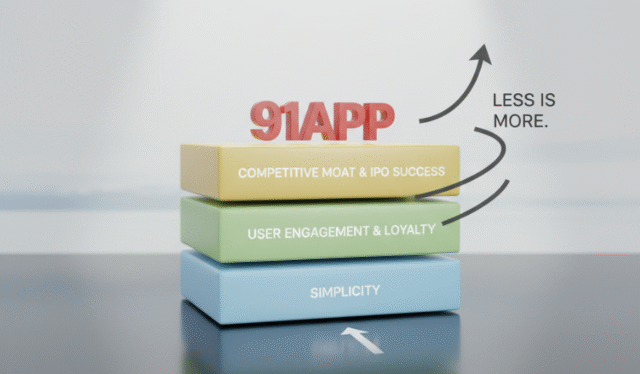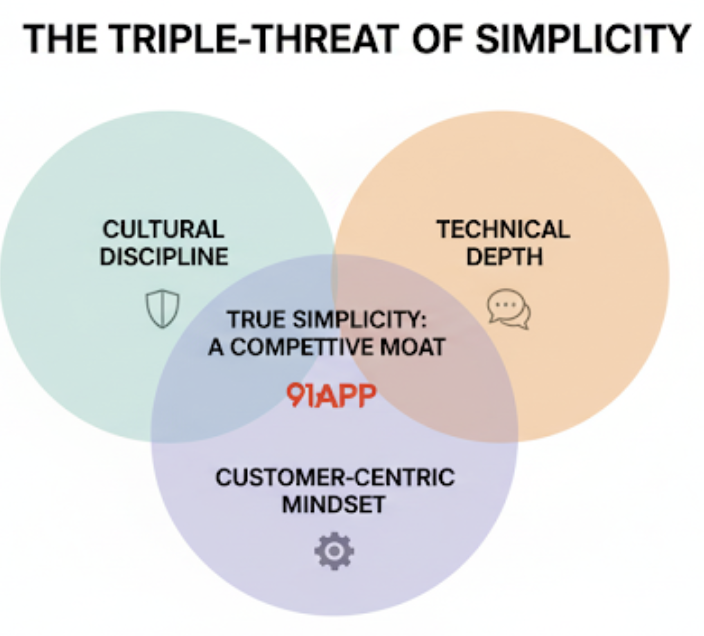SINGAPORE, 27 November 2025 — AppWorks returns to Singapore with Demo Day #31, spotlighting 16 of the region’s highest-traction AI, IoT, Web3 and DePin startups, more than half led by repeat founders with deep operating experience. Hosted at Guoco Midtown Network Hub, the showcase reflects a major shift in Southeast Asia’s digital economy toward high-execution founders solving real-world problems with proven technologies and clear roadmaps towards profitability across fintech, mobility, health, industrial automation and infrastructure for decentralised finance.
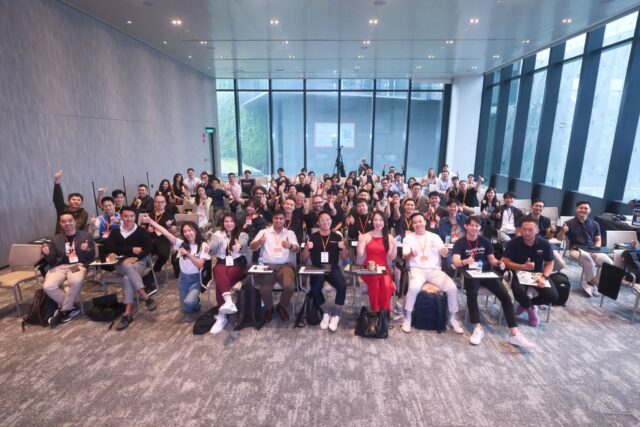
Founders, partners, and mentors gathered for AppWorks Demo Day #31 in Singapore
A defining characteristic of this cohort is its operator depth: 54% of founders are repeat entrepreneurs, reflecting the region’s shift toward experienced builders with a track record of shipping, scaling and solving real problems in increasingly complex markets.
- AI and IoT Enter Real-World Deployment Across SEA
The Southeast Asia AI market is rapidly expanding with strong adoption across enterprises and SMEs. BCG estimates that AI could contribute up to USD 120 billion to regional GDP by 2027, driven by productivity gains across logistics, healthcare, finance, and infrastructure.In 2024, AI adoption among SMEs in Southeast Asia tripled from 4.2% to 14.5%, supported by a young, tech-savvy population and increasing investments in AI-ready data centers. Southeast Asia is poised to become a global AI powerhouse, with vibrant startup activity and growing collaboration between global tech leaders and local innovators accelerating ecosystem growth.
With 14 teams applying AI and IoT to commercial use cases, Demo Day #31 showcases how intelligence systems are being embedded directly into the operating fabric of Southeast Asia.
A standout example is Hivebotics (Singapore), a robotics company tackling labour shortages and operational inefficiencies across commercial cleaning and facilities management. Co-founded by Rishab Patwari and Tuan Dung, Hivebotics deploys autonomous restroom and building-cleaning robots powered by machine learning and workflow optimisation models. Hivebotics is already working with Changi Airport Group, ISS, Sodexo, Kintsugi Holdings, and Chaico Development (HK) Pte. Ltd. across Singapore, the UAE, the US, Hong Kong, and Taiwan, reflecting strong enterprise demand for automation amid labour constraints..
Another notable case is Fluid (Singapore), founded by Trasy Lou and Steven Li, is an AI B2B payments and embedded credit platform used by 3,000+ suppliers and buyers across Singapore and Malaysia. Powered by AI Finance Agents, Fluid automates reconciliation and collections while unifying underwriting and payments into a single flow, helping SMEs improve liquidity, reduce manual work, and get paid faster.
- Repeat Founders Strengthening Execution Readiness
A recent statistic from Bain’s e-Conomy SEA 2025 report highlights that Southeast Asia’s digital economy is projected to surpass USD 300 billion in gross merchandise value by 2025, supported by robust 15% year-on-year growth in key sectors like e-commerce, fintech, and AI. Despite funding headwinds, private tech investments have risen steadily, demonstrating resilience and execution readiness among startups.
This rising operator depth can be seen in ventures like Maibel (Singapore), a story-driven AI wellness companion designed specifically for women in Asia. Founder Mabel Loh previously built AMFIT Academy, a holistic women’s strength-training business with a 1.6K-strong community. 7 months in, Maibel’s early beta tests proved strong user stickiness. Across 100 users, the early MVP retention was triple the industry’s average. Maibel is currently in stealth mode, scaling into SEA post seed raise in June 2026.
Trainge (Taiwan) offers another case of mature operator execution. With 170+ paying gyms (including Anytime Fitness), 150K+ users, and 2,000+ verified trainers, Trainge has already achieved USD 2.5M in annual revenue in Taiwan and is now preparing for regional expansion into Singapore and Malaysia, where hybrid fitness adoption continues to grow.
This type of founder depth, operational experience, cross-industry pivoting, and cultural insight, reflects the rising calibre of founders in Southeast Asia’s next wave of tech innovation.
- Southeast Asia as the Primary Market
As Southeast Asia’s digital adoption accelerates, 12 startups in this cohort are building specifically for the region’s most urgent gaps, financial access, mobility, travel infrastructure, authentication, and digital services, while showing clear signals of revenue quality, regulatory understanding and cross-border scalability.”
Among them is Hata (Malaysia), founded in Malaysia by David Low, KK Chong and Darien Ng, a regulated digital asset exchange enabling fiat-to-crypto trading in both MYR and USD. With 200,000 registered users and USD 26 million in assets under custody, Hata is emerging as one of Malaysia’s most trusted compliant on-ramps for Web3 adoption.
Parkit (Malaysia), founded by Kyan Liew, is a high-growth SEA mobility operator tackling Malaysia’s persistent parking infrastructure inefficiencies. Beyond parking, Parkit now offers mobility solutions including insurance services, serving over 40,000 registered users with access to 300,000 daily MRT commuters using their infrastructure. With over 30,000 paying customers, and B2B clients like Samsung and Malaysia Mass Rapid Transit, Parkit has grown to generate USD 4M in annual revenue through a mix of enterprise and consumer channels.
Founded by KaKit Chen, LegitApp (Canada) is another start up gaining momentum with its AI-powered luxury authentication engine, which combines expert verification with automated precision. Now expanding into Southeast Asia, LegitApp processes 3,000 daily authentication checks for over 2 million users across platforms such as TikTok Shop and Carousell, generating USD 3M in annual revenue.
Also noteworthy is HeyMax (Singapore), founded by Joe Lu, is a traveller rewards aggregator tackling the region’s fragmented loyalty landscape. With over 150,000 users, and over 800 merchant partnerships with the likes of Japan Railways East, Cathay Pacific, Singapore Airlines, Qatar Airways, Trip.com, KKDay, Amazon.sg, Octopus HK and Klook, HeyMax has achieved USD 6M ARR and 45,000 MAU, consolidating a fragmented rewards landscape for everyday travellers.
- A New Frontier for Web3 & DePin
Demo Day #31 also highlights a dynamic wave of Web3 and decentralised physical infrastructure (DePin) projects that move beyond speculation toward tangible real-world applications. These startups are pioneering next-gen infrastructure solutions that leverage blockchain and AI to unlock new efficiencies and accessibility in traditionally siloed industries.
Juic3 Labs (Taiwan), founded by Ramos Chang and RD Yu, is building self-balancing distributed battery networks designed to stabilise and decentralise future energy grids. The company has already secured three key energy partners across Battery, EPC, and EMS sectors, supporting 2.8MWh of battery capacity deployments across Taiwan.
Meanwhile, Singular (Hong Kong), founded by Terrence Hooi, is democratising access to top-tier private equity through fractionalised on-chain investment infrastructure. With 55,000+ registered users, over USD 2 million processed, and a USD 200 million deal pipeline, Singular is opening institutional-grade opportunities, such as SpaceX, OpenAI, and Anduril, to a new generation of global investors through compliant Hong Kong structures.
Auki Labs (Hong Kong), founded by Nils Pihl and Santeri Aramo, is building the real world web, making physical spaces browsable, searchable and navigable to AI and robots. With over 1000 locations signed up, Auki is already making millions in ARR providing AI copilots for physical labor running on phones, smart glasses and robots, and is projecting 100,000 locations connected by the end of 2028.
These ventures underscore Southeast Asia’s growing role as a regional hub for pragmatic Web3 and DePin innovation, fueled by increasing regulatory clarity, investor interest, and the region’s innate suitability for decentralised infrastructure, given its young population, mobile penetration, and infrastructure gaps.
According to McKinsey, Southeast Asia is attracting significant investments in digital infrastructure and blockchain technology, reflecting its leadership in Asia’s emerging tech economy. Backed by strong capital inflows and active startup ecosystems, the region has become a recognised hub for early-stage Web3 innovation and infrastructure investment.
Alyssa Chen, Principal of the Accelerator Arm, AppWorks said, “Founders in Southeast Asia are entering a more grounded, experience-driven phase, and this cohort reflects that shift. Many have built before, they understand customer pain points, cross-border realities, and what it takes to operationalise AI, IoT, and on-chain systems in the real world. Demo Day #31 is an opportunity for investors to meet operators already demonstrating real traction across the region.
“As we look toward AW#32, we’re especially supporting founders in three verticals shaping Asia’s next decade: Manufacturing AI, where Taiwan’s supply chain gives builders a real advantage; Defence Tech, where dual-use innovation is rapidly expanding; and On-Chain Banking, as financial infrastructure becomes increasingly programmable. No matter the specific product you’re building, AppWorks is a strategic partner for entering Taiwan and scaling across Asia.”
Across all cohorts, the AppWorks community now includes 653 active startups, founded by 2,086 entrepreneurs across markets such as Singapore, Taiwan, Hong Kong, Indonesia, Malaysia, Vietnam and beyond. These companies have collectively raised US$7.3 billion, achieved a combined valuation of US$37.7 billion, and generated US$17.4 billion in annual revenues, while employing 28,256 people worldwide.
This continued expansion underscores the strength of AppWorks’ regional network and the growing maturity of Southeast Asia’s digital ecosystem. With new ties formed this year, including investment partnerships with KVIC (Korea Venture Investment Corp) and Jelawang in Malaysia, the community is deepening its cross-border capabilities and accelerating connectivity across Greater Southeast Asia.
Below is the full list of pitching teams showcased at AppWorks Demo Day #31 Singapore, representing some of the most driven and forward-looking builders in the region.
| # | Company | Country/Market | 1‑line description | URL |
| 1 | HeyMax | SG | Traveller’s rewards aggregator. | https://heymax.ai |
| 2 | Fluid | SG | AI-powered B2B payment platform with credit built in. | https://www.gofluid.io/ |
| 3 | Alpha Story | SG | Forecasting and executing on digital narratives 24-7. | alphastory.co |
| 4 | Hivebotics | SG | AI-powered robot for commercial restroom and facility cleaning. | www.hivebotics.tech |
| 5 | Maibel | SG | Story-driven AI wellness companion for women. | https://www.maibel.com |
| 6 | Singular | HK | On-chain access to fractional shares in world-class private equity. | https://singulardex.com |
| 7 | Hata | MY | A licensed Malaysian digital asset exchange for fiat-to-crypto trading in MYR and USD. | https://hata.io/home |
| 8 | Parkit | MY | Smart parking infrastructure for property owners and businesses. | www.parkitmy.com |
| 9 | Plandora | SG | Trusted travel plans with AI real creator twins. | plandora.com |
| 10 | LegitApp | CA | Luxury authentication, built on expert analysis and AI precision | https://legitapp.com/ |
| 11 | Auki Labs | HK | AI copilots for physical spaces, running on the real-world web. | www.auki.ai |
| 12 | Klipy | HK | AI executive secretary for high touch professionals. | http://klipy.ai/ |
| 13 | Adora | JP | AI app protecting kids from cyberbullying and online predators. | https://www.adora-app.com/ |
| 14 | Trainge | TW | All in one fitness platform for both individual and gyms | trainge.com |
| 15 | AMMO | UK | AI powered community management. | https://www.ammoai.io/ |
| 16 | Juic3 Labs | TW | Self-balancing grid powered by distributed battery networks. | https://juic3.xyz/ |
